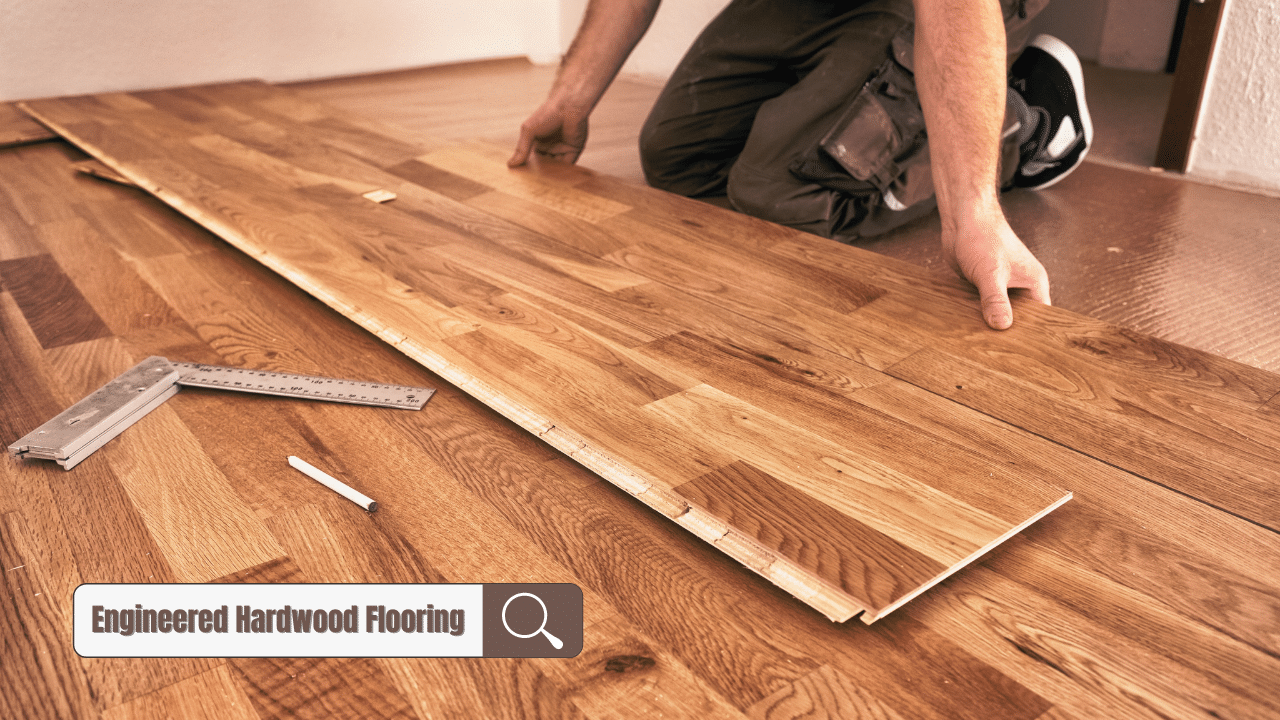When we see beautiful hardwood floors, it's easy to be reminded why it's a true classic that never goes out of style. Its unmatched natural beauty perfectly suits country-style, modern, and even traditional homes.
To add a cherry to the top, hardwood flooring also comes in different types and styles– so there's plenty of hardwood flooring options that fit every homeowner's budget.
Let's break down all the different hardwood floors, so it becomes easier to distinguish and less of a riddle. We're talking modern laminate hardwood to reclaimed floors and synthetic wood to natural hardwood flooring.
Solid vs. Engineered Hardwood Floors
There are different ways to discuss the different hardwood types (such as by species or by finishing), but for clarity, there are two main types: engineered and solid hardwood flooring.
Solid Hardwood Flooring

True to its name, solid hardwood floors are made of solid planks of wood cut from a particular tree type. It is considered the standard hardwood type, famed for its durability, lasting for decades given proper maintenance.
It is usually available in 5/8" to 3/4" thickness, and solid hardwood floors can be sanded and refinished repeatedly as you deem fit.
One thing to note is its susceptibility to moisture or humidity fluctuations, so it's not ideal for use in bathrooms, below-grade basements, or laundry rooms. You can give it a quick remedy by finishing the wood, though.
Engineered Hardwood Flooring

In contrast, engineered hardwood flooring is similar to plywood– in a sense that a hardwood top layer is glued to multiple wood layers.
It makes the material extremely stable and suitable for use in any home area, including basements. It can contract and expand without even causing damage to the floors. The material has been recently developed to solve the problems of solid hardwood, particularly its vulnerability to moisture and humidity problems.
However, it may only be sanded or refinished once or twice throughout its lifetime.
Reclaimed Hardwood Flooring
Aside from the two types of hardwood floors, you may also go with reclaimed hardwood flooring. You can easily find this at salvage yards.
Although it poses visible wear and tear signs– it's a cheaper alternative to consider. It is an excellent choice when doing renovation projects for older homes.
Types of Hardwood Flooring by Species
Some also categorize hardwood floor types by their species. This depends on your preferred color tones, grain patterns, and durability for high-traffic areas in the home.
That said, there are multiple hardwood flooring types based on their wood species to suit different interior styles– from contemporary to transitional.
Keep in mind that design choices in the form of the floor's finish and texture can make a huge difference in your new hardwood floors.
Finished vs. Unfinished Hardwood Flooring
Traditionally, solid hardwood floors were only available in unfinished type. A professional installer had to stain and apply a finish coat to improve its surface protection.
However, many hardwood floors in the market today are already prefinished– so you won't have to worry about staining and applying topcoats during its installation.
Here's a quick rundown of the pros and cons you can expect between the two.
Unfinished Hardwood Flooring
Choosing unfinished hardwood floors is the perfect choice if you're looking for a custom, one-of-a-kind finish.
Homeowners who want to match the color or the floors to their furniture or other floorings inside the home can go with this route. You can choose your stain of preference before applying the final finish.
Additionally, this hardwood flooring may also be moisture-resistant as it is only stained and finished after installation.
Why choose Unfinished Hardwood Floors?
Finished Hardwood Flooring
Convenience is the primary selling point in prefinished hardwood floors. It saves you time sanding, sealing, and finishing the new floors after installation. With that in mind, the professional installation costs will be cheaper.
Why choose Finished Hardwood Floors?
Types of Hardwood Flooring: How to Know Which One is Best for You?
After discussing the different types of hardwood floors, how will you choose the best one for your needs? Ultimately, the choice will boil down to four critical factors: budget, personal preference, visual appeal, and practical benefits.
If you have a couple of pets at home, ensure that your new hardwood floors are durable and long-lasting. Homeowners with small spaces can choose hardwood floors with lighter finishes to make the area look more prominent.
Ideally, choose hardwood floors that go well with your interiors without sacrificing durability and quality. Try to strike a balance of both. (Related: Is Hardwood Flooring In A Bathroom A Good Idea? (Pros, Cons & Everything You Need To Know)
Trust us. You wouldn't want to regret having beautiful, premium hardwood floors– only to realize it doesn't meet the practical needs of your household.
